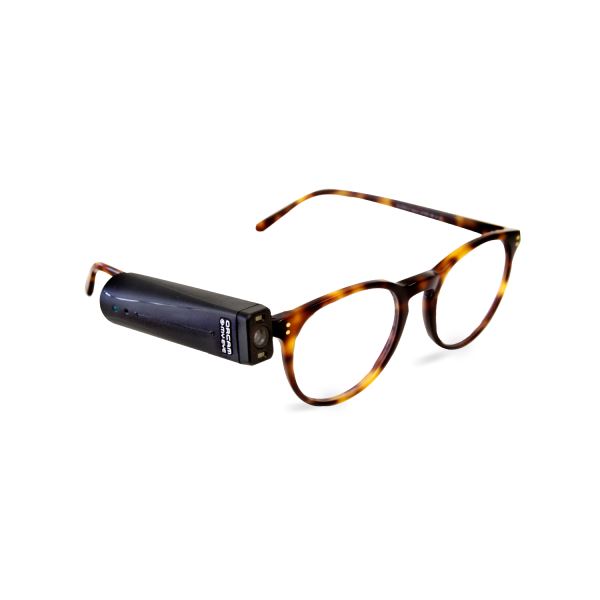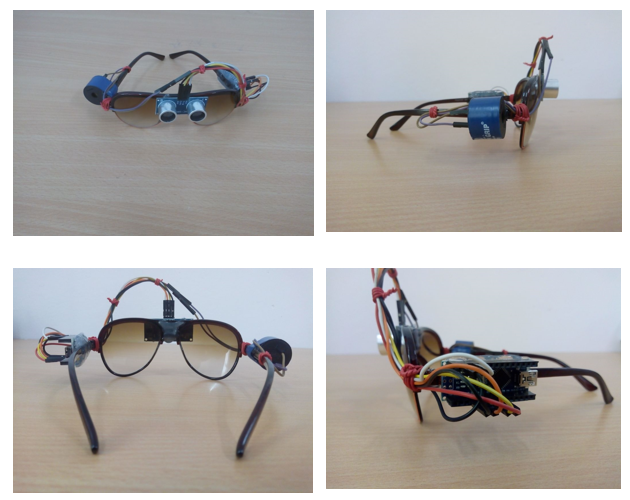The Future of Assistive Technology for the Blind: Empowering Independence
Enhancing Ease Of Access Through Assistive Modern Technology for the Blind
The assimilation of assistive modern technology for the blind represents an essential innovation in ease of access, fundamentally changing just how individuals browse their atmospheres and involve with society. From screen viewers to cutting-edge smart walking canes, these devices not only boost independence however likewise advertise inclusivity in various rounds of life. As we explore the diverse kinds of assistive tools and their substantial effect on everyday living, it ends up being important to take a look at exactly how ongoing technological innovations are reshaping the landscape of support for the blind area. What ramifications do these developments hold for the future of accessibility?
Summary of Assistive Modern Technology
Assistive technology describes a variety of devices and software program developed to boost the capacities of people with handicaps, including those that are visually impaired or blind. This modern technology plays a critical function in advertising self-reliance and boosting the high quality of life for customers. By providing different approaches for accessing information and performing day-to-day jobs, assistive innovation empowers people to navigate their environments better.
The development and application of assistive modern technology embrace a range of concepts focused on cultivating accessibility. These principles consist of user-centered layout, which prioritizes the requirements and choices of the individual, and the combination of innovation into daily tasks. Such improvements make certain that assistive tools are not just functional but also instinctive and very easy to utilize.
Moreover, assistive innovation encompasses a diverse spectrum of options, from low-tech options like magnifiers to modern developments such as display readers and Braille display screens. The recurring evolution of this area is driven by the requirement to deal with the distinct challenges dealt with by people with aesthetic disabilities (Wearable technology for low vision). As innovation continues to advance, the potential for enhancing access and promoting inclusivity stays appealing, eventually adding to a more fair society

Sorts Of Assistive Devices
Numerous sorts of assistive devices are offered to support individuals that are visually damaged or blind, each developed to address details needs and difficulties. These devices can be generally classified right into three major kinds: low-tech, mid-tech, and high-tech services.
Low-tech devices consist of products such as magnifiers, Braille tags, and responsive maps. These are relatively simple devices that enhance the user's ability to communicate with their atmosphere without requiring intricate innovation.
Mid-tech devices commonly involve a lot more innovative attributes, such as electronic magnifiers and mobile Braille note-takers. These gadgets can supply functionalities like speech output, permitting customers to gain access to details much more efficiently.

Influence on Daily Living
The schedule of numerous assistive gadgets significantly boosts the top quality of life for individuals that are blind or aesthetically impaired, influencing their daily living in extensive means. By integrating technologies such as display visitors, Braille presents, and audio description solutions right into their regimens, individuals obtain better autonomy and freedom. These devices help with accessibility to information, making it possible for people to carry out everyday jobs, such as reviewing e-mails, browsing public spaces, and taking pleasure in media content.
Additionally, assistive gadgets empower individuals to engage even more completely in social communications and area tasks. The capacity to make use of mobile phones outfitted with availability features enables smooth communication and link with others. This connection fosters a sense of belonging and lowers feelings of seclusion.
In professional setups, assistive innovation sustains performance by allowing people to full job jobs efficiently. Devices like voice recognition software program and specialized magnifying gadgets enable customers to take part in the labor force on equal ground with their sighted peers.

Developments in Technology
Current technical innovations have considerably changed the landscape of devices available for people that are aesthetically impaired or blind. The assimilation of artificial intelligence (AI) and maker knowing has actually given increase to applications that boost navigation and item recognition. As an example, smartphone applications can now utilize AI to recognize and explain environments in real-time, supplying users with useful contextual information.
Furthermore, advancements in haptic technology have led to the advancement of clever canes furnished with sensing units that detect barriers and provide tactile responses. This equips individuals to navigate their atmosphere with enhanced self-confidence and independence. In addition, technologies in text-to-speech software and braille display screens have improved the availability of digital content, enabling for smooth interaction with different media.
Wearable innovations, such as smart glasses, are likewise making strides in helping visual disability. As innovation continues to develop, the potential for also more transformative devices remains on the perspective.
Future Trends and Innovations
As innovation swiftly advances, the future of assistive tools for people that learn this here now are blind holds enormous guarantee. Developments in expert system (AI) and artificial intelligence are poised to reinvent the means blind customers interact with their environments. AI-driven applications are being created to boost object recognition, allowing users to determine and browse their surroundings with higher simplicity and precision.
In addition, developments in haptic comments modern technology are enabling the production of responsive maps and navigation help that supply real-time info with touch. These innovations not just enhance movement yet also foster like it independence. Additionally, wearable tools furnished with enhanced reality (AR) features are arising, providing individuals visual info via audio summaries, therefore bridging the void between the electronic and physical globes.
Furthermore, the assimilation of smart home technology provides brand-new opportunities for availability, allowing people to control their living environments with voice commands or mobile phone applications. As collaboration in between tech developers and the blind area proceeds, the emphasis on user-centered style will guarantee that future advancements are customized to fulfill the unique needs of this populace (Wearable technology for low vision). The trajectory of assistive technology promises a more empowering and inclusive future for individuals that are blind
Final Thought
In final thought, assistive modern technology plays an essential duty in boosting ease of access for people with aesthetic impairments. Continuous improvements in innovation and user-centered style make certain that these devices provide effectively to the special demands of the blind neighborhood.
The assimilation of assistive technology for the blind represents a critical advancement in availability, fundamentally altering just how individuals navigate their settings and involve with society.Assistive technology refers to a range of devices and software application developed to boost the capabilities of individuals with disabilities, consisting of those who are blind or visually impaired. Wearable technology for low vision.As innovation swiftly proceeds, the future of assistive tools moved here for individuals who are blind holds enormous pledge. The trajectory of assistive innovation assures a more empowering and inclusive future for individuals that are blind
In verdict, assistive technology plays an essential function in boosting ease of access for individuals with visual impairments.